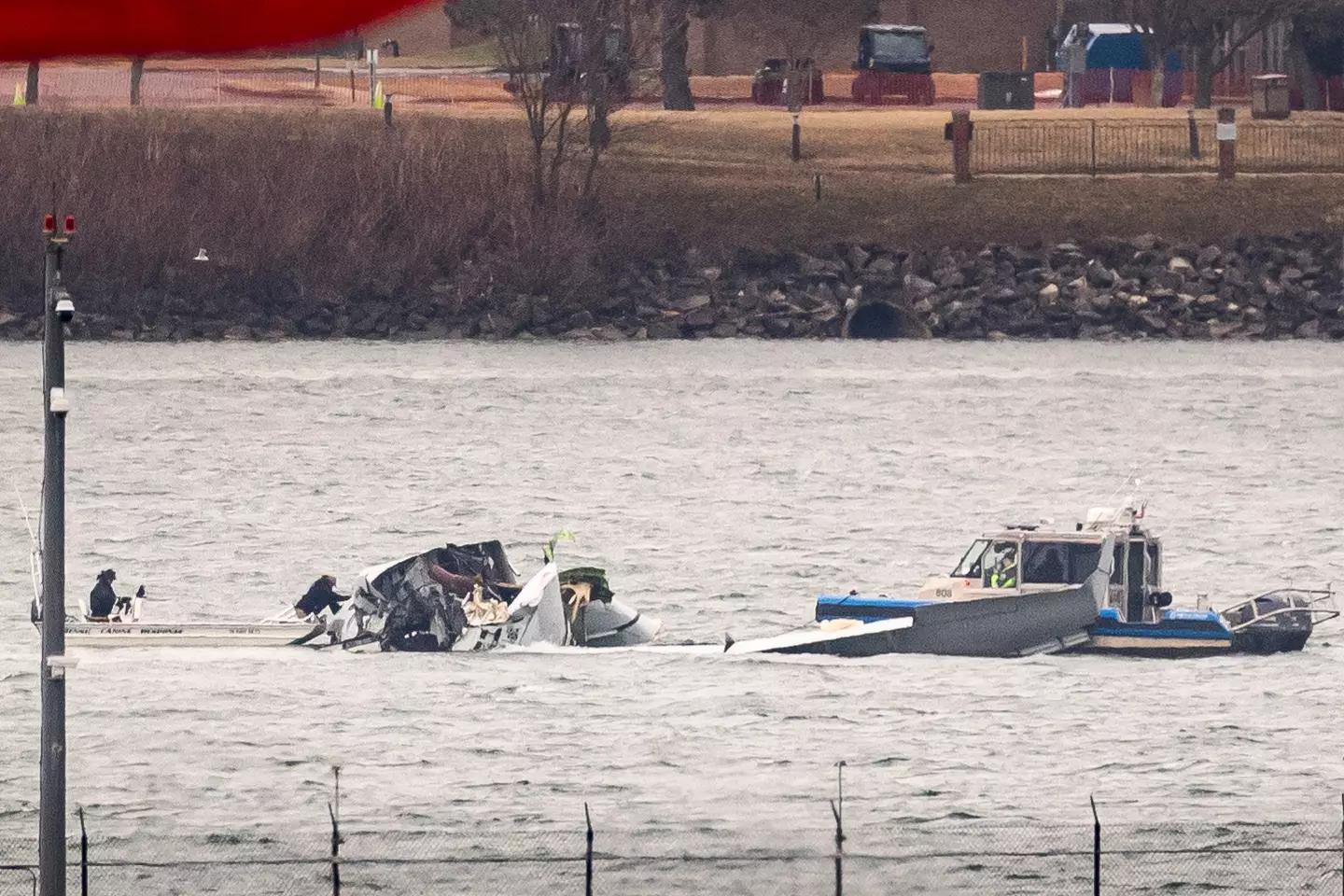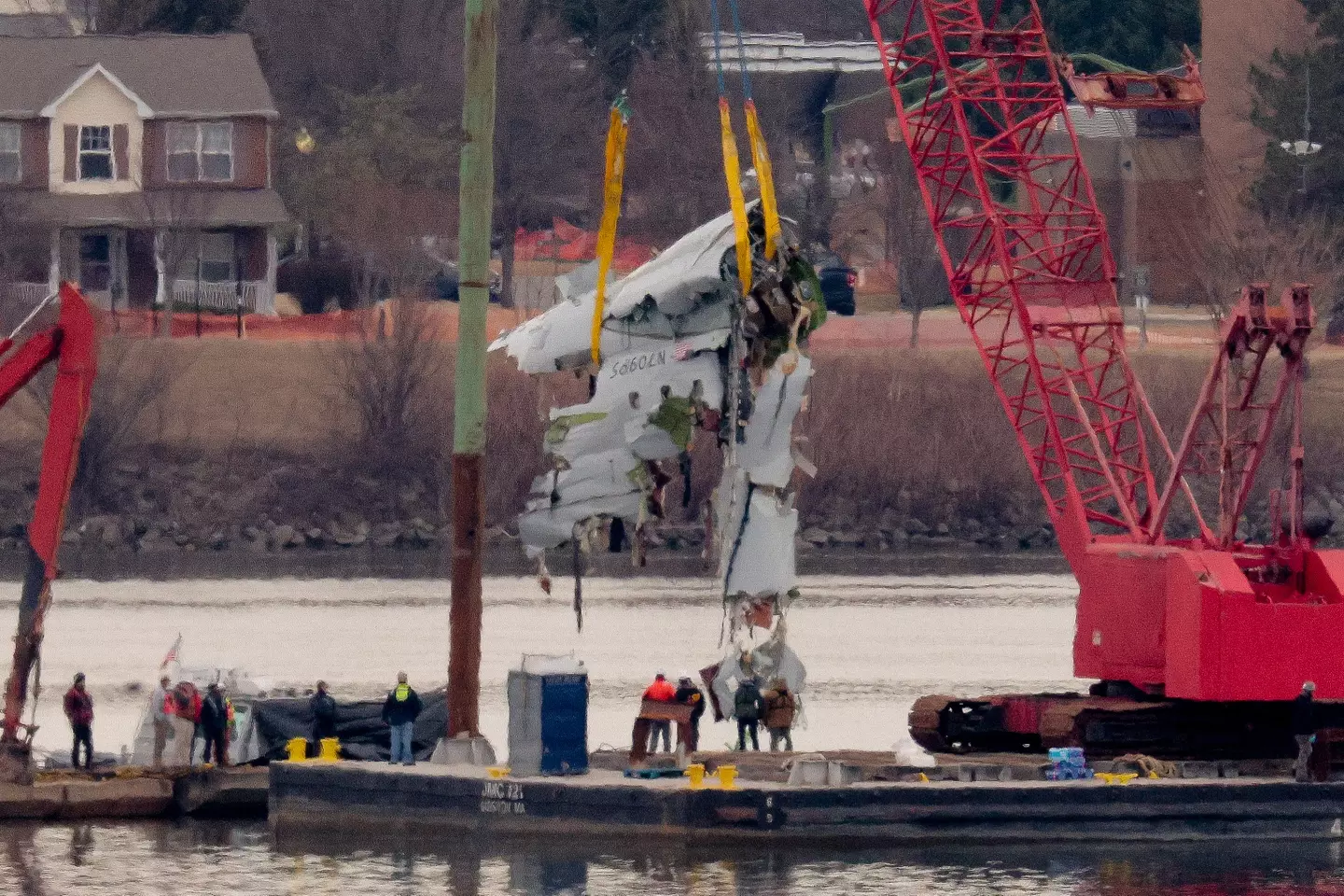Authorities are still in the process of uncovering what was the root cause of the American Airlines crash that happened at the end of January.
The commercial airline plane was coming to land at Ronald Reagan National Airport on January 29 when it collided with a Black Hawk military helicopter.
All 64 passengers on the plane died along with the 3 people on the helicopter.
Both aircraft crashed into the Potomac River and a massive search got underway to check for survivors before it turned into a body recovery mission.
On Friday (February 14) National Transportation Safety Board Chairman Jennifer Homendy gave an update into the investigation surrounding the crash regarding the cause.


Following the crash an investigation was launched (Al Drago/Getty Images)
According to an ABC News report, the helicopter crew may have had bad information on their altitude before it was struck by the American Airlines jet.
One of the pilots reportedly thought they were at 400 feet and the other thought they were at 300 feet. However, the NTSB is not yet prepared to say at what exact altitude the helicopter was at the point of impact.
Homendy said: “We are looking at the possibility of there may be bad data.
“In addition to this, the transmission from the tower, that instructed the helicopter to go behind the plane, may not have been heard by the crew the pilot may have keyed her radio at the same second and stepped on the transmission from ATC.”
Texas Senator Ted Cruz has also previously weighed in on the issues that may have befallen the helicopter crew before the crash.
Speaking to reporters earlier this month, he said the helicopter had its automatic dependent surveillance-broadcast (ADS-B) system turned off.
ADS-B is one form of data that air traffic controllers use to track aircraft in the sky, along with Center Radar and Approach Radar.


Incorrect data in the helicopter may have contributed to the crash (Chip Somodevilla/Getty Images)
Military aircraft are allowed to fly with this system switched off even though it offers much more accurate tracking of aircraft locations than the transponder – which the Black Hawk also had on board.
Per CBS News, he said: “Unless there was a compelling national security reason for turning it off, that does not seem justified and in this instance, this was a training mission so there was no national security reason for ADS-B to be turned off.”
However, at the time, Homendy added more confusion to the situation by stating that the NTSB had not yet confirmed whether there was an ADS-B on board.
She simply said: “We don’t know that at this time.”


